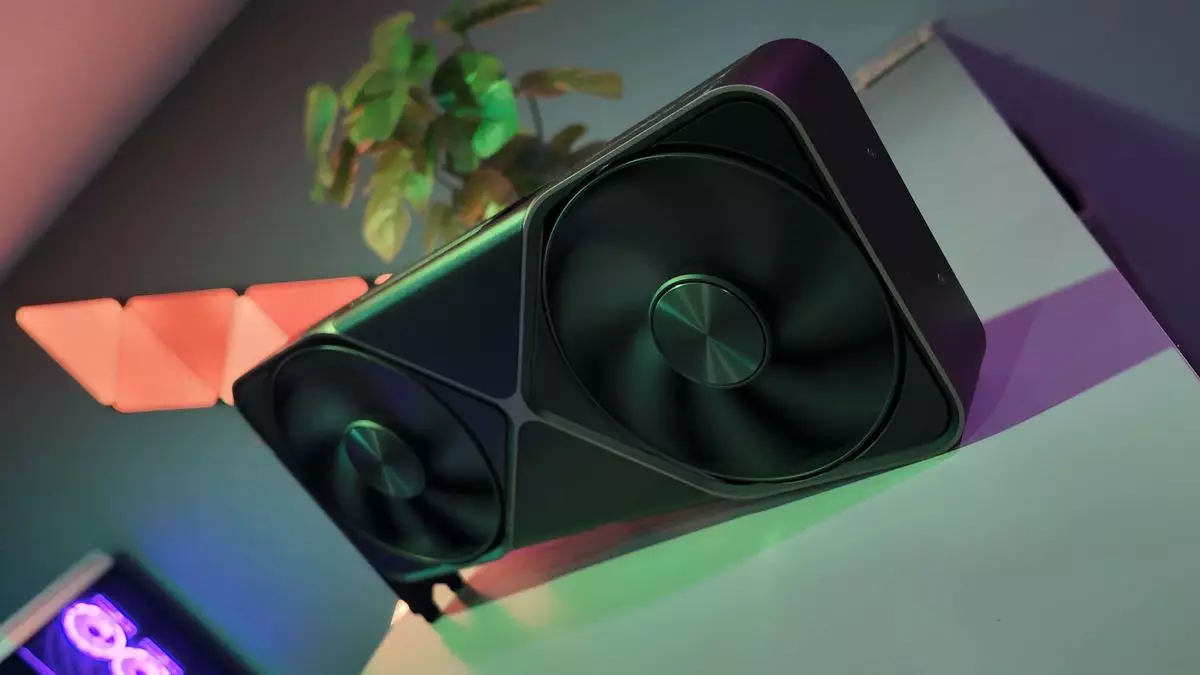The exhilarating introduction of Nvidia’s RTX 50-series graphics cards, namely the RTX 5080 and RTX 5090, has rapidly turned into a contentious topic among gamers and tech enthusiasts. Although these GPUs were lauded for their impressive specifications and capabilities, an unsettling pattern of issues has emerged, primarily manifesting as black screens and system crashes. The growing chorus of discontent leads to an urgent inquiry into the sources of these malfunctions and the measures Nvidia might take to remedy the situation.
Users across various platforms have begun sharing their frustrating experiences with the RTX 50-series cards, with many reporting seemingly random black screens. These occurrences are not limited to a single situation; they vary vastly—some users face issues during resolution transitions or refresh rate changes, while others encounter black screens under intense workloads or when utilizing multi-monitor setups. Compounding these difficulties, some affected individuals report that a hard reboot fails to restore functionality, with the GPU allegedly not being recognized in the device manager or system BIOS, while others see intermittent failures, suggesting a convoluted web of potential causes.
Interestingly, personal experiences among reviewers seem to differ significantly. For instance, certain testers mentioned they have encountered minimal problems, noting that the occasional game crashes seemed manageable, especially when overclocking their RTX 5080s. However, the unpredictable nature of the reported issues raises concerns about the underlying quality and stability of the products being offered to consumers.
A critical clue in unraveling this puzzle points to Nvidia’s latest driver release, version 572.16. Users have speculated that this update may have incited the problems, echoing a trend seen previously with problematic driver rollouts. Reports of “permanent” card failures, while documented, appear to be infrequent and may not signal widespread manufacturing defects. In the context of any large customer base, a small percentage of failures can occur due to various reasons ranging from manufacturing inconsistencies to user errors.
Notably, even users of the previous RTX 40-series GPUs have voiced similar grievances coinciding with the introduction of the 572.16 driver. This suggests that the issues may not be uniquely associated with the new 50-series cards but could indicate a broader problem with Nvidia’s driver architecture. The complexity of the situation only deepens when considering that some users have managed to run their RTX 5080s stably with impressive overclock settings, further muddying the waters regarding the root of the instability problems.
As the outcry from the user community continues, the industry’s focus shifts toward identifying potential solutions. Nvidia has acknowledged the concerns raised, stating they are currently investigating the reported problems with the RTX 50-series. This promise sets the stage for possible driver hotfixes or clarifications regarding the scope of the issues.
In the interim, users experiencing crashes or black screens have begun to share best practices aimed at alleviating some of the disruptions. The most prominent recommendation is employing Display Driver Uninstaller (DDU) to completely uninstall any existing drivers before reinstalling the latest version. This method aims to mitigate conflicts that may arise from residual driver files, which many suspect may be contributing to the instability issues.
Additionally, users are advised to set the PCI Express graphics port to PCIe Gen 4 mode. This suggestion reflects growing concerns regarding PCIe signaling problems, indicating that the key to improved stability may lie in how these new GPUs communicate with the system’s motherboard.
As Nvidia delves deeper into the RTX 50-series issues, the community watches closely, anxiously awaiting updates and solutions. The juxtaposition of user frustrations against Nvidia’s established reputation for cutting-edge technology presents a unique challenge for the company. If resolved successfully, these issues could serve as a valuable lesson, reinforcing the importance of thorough quality assurance and user feedback in the ever-evolving landscape of computer hardware.
For now, speculation persists as to the nature of the problems surrounding the RTX 50-series GPUs. The discussion itself, however, is a testament to the vibrant and passionate community of gamers and technology enthusiasts, determined to make their voices heard in the quest for clarity and resolution in the face of adversity. As Nvidia works to restore faith among its consumer base, one can only hope that robust solutions will emerge from these challenges, ultimately paving the way for a more stable and exciting future in gaming graphics.

